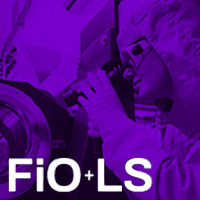Abstract
Rapid biosensing assays to detect SARS-CoV-2 are critical in mitigating the impact of the pandemic. Here, we use a lens-free holographic microscope coupled with deep learning in a rapid and sensitive assay to detect SARS-CoV-2.
© 2022 The Author(s)
PDF ArticleMore Like This
S. Miyamura, R. Oe, T. Nakahara, S. Okada, T. Kajisa, S. Taue, Y. Tokizane, T. Minamikawa, T. Yano, K. Otsuka, A. Sakane, T. Sasaki, K. Yasutomo, and T. Yasui
JTh6A.6 CLEO: Applications and Technology (CLEO:A&T) 2022
Dipanjan Nandi, Jiaxin Fan, Seongdae Kang, and Manisha Gupta
JTu3A.20 Clinical and Translational Biophotonics (Translational) 2022
Elisa Borges Taveira, Marco Fidel Guevara-Vega, Igor Andrade Santos, Douglas Carvalho Caixeta, Victoria Riquena Grosche, Thulio Marquez Cunha, Murillo Guimarães Carneiro, Ana Carolina Gomes Jardim, and Robinson Sabino-Silva
Tu1C.8 Latin America Optics and Photonics Conference (LAOP) 2022

